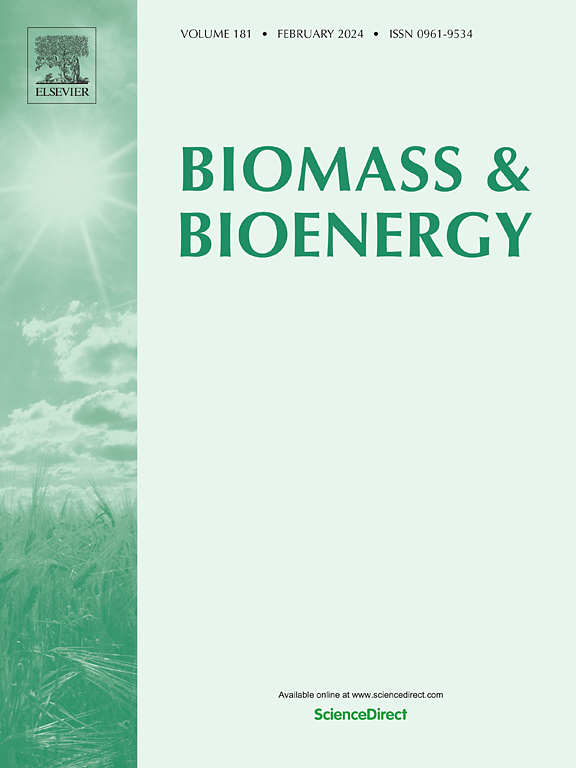Lifecycle implications and mechanical properties of carbonated biomass ashes as carbon-storing supplementary cementitious materials
IF 5.8
2区 生物学
Q1 AGRICULTURAL ENGINEERING
引用次数: 0
Abstract
Methods to sequester and store atmospheric CO2 are critical to combat climate change. Alkaline-rich bioashes are potential carbon fixing materials. This work investigates potential co-benefits from mineralizing carbon in biomass ashes and partially replacing high embodied greenhouse gas (GHG) Portland cement (PC) in cement-based materials with these ashes. Specifically, rice hull ash (RHA), wheat straw ash (WSA), and sugarcane bagasse ash (SBA) were treated to mineralize carbon, and their experimental carbon content was compared to modeled potential carbonation. To understand changes in the cement-based storage materials, mortars made with CO2-treated WSA and RHA were experimentally compared to PC-only mortars and mortars made with ashes without prior CO2 treatment. Life cycle assessment methodology was applied to understand potential reductions in GHG emissions. The modeled carbonation was ∼18 g-CO2/kg-RHA and ∼180 g-CO2/kg-WSA. Ashes oxidized at 500 °C had the largest measured carbon content (5.4 g-carbon/kg-RHA and 35.3 g-carbon/kg-WSA). This carbon appeared to be predominantly residual from the biomass. Isothermal calorimetry showed RHA-PC pastes had similar heat of hydration to PC-pastes, while WSA-PC pastes exhibited an early (at ∼1.5 min) endothermic dip. Mortars with 5 % and 15 % RHA replacement had 1–12 % higher compressive strength at 28 days than PC-only mortars, and milled WSA mortars with 5 % replacement had 3 % higher strength. A loss in strength was noted for the milled 15 % WSA, the CO2-treated 5 %, and the 15 % WSA mortars. Modeled reductions in GHG emissions from CO2-treated ashes were, however, marginal (<1 %) relative to the untreated ashes.
求助全文
约1分钟内获得全文
求助全文
来源期刊

Biomass & Bioenergy
工程技术-能源与燃料
CiteScore
11.50
自引率
3.30%
发文量
258
审稿时长
60 days
期刊介绍:
Biomass & Bioenergy is an international journal publishing original research papers and short communications, review articles and case studies on biological resources, chemical and biological processes, and biomass products for new renewable sources of energy and materials.
The scope of the journal extends to the environmental, management and economic aspects of biomass and bioenergy.
Key areas covered by the journal:
• Biomass: sources, energy crop production processes, genetic improvements, composition. Please note that research on these biomass subjects must be linked directly to bioenergy generation.
• Biological Residues: residues/rests from agricultural production, forestry and plantations (palm, sugar etc), processing industries, and municipal sources (MSW). Papers on the use of biomass residues through innovative processes/technological novelty and/or consideration of feedstock/system sustainability (or unsustainability) are welcomed. However waste treatment processes and pollution control or mitigation which are only tangentially related to bioenergy are not in the scope of the journal, as they are more suited to publications in the environmental arena. Papers that describe conventional waste streams (ie well described in existing literature) that do not empirically address ''new'' added value from the process are not suitable for submission to the journal.
• Bioenergy Processes: fermentations, thermochemical conversions, liquid and gaseous fuels, and petrochemical substitutes
• Bioenergy Utilization: direct combustion, gasification, electricity production, chemical processes, and by-product remediation
• Biomass and the Environment: carbon cycle, the net energy efficiency of bioenergy systems, assessment of sustainability, and biodiversity issues.
 求助内容:
求助内容: 应助结果提醒方式:
应助结果提醒方式:


